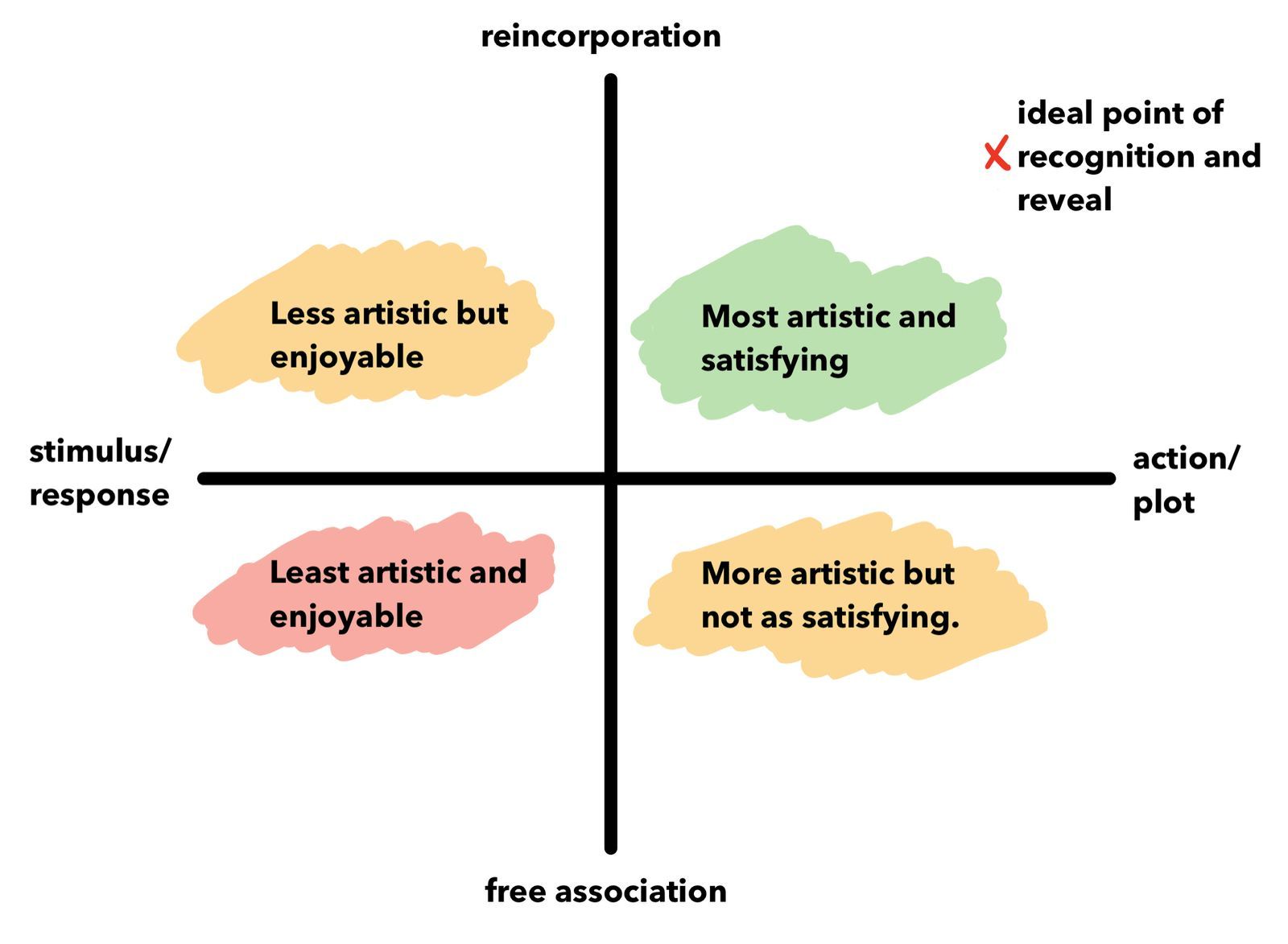Creating a Satisfying and Artistic Reveal
1
Yesterday's problem and essay got me thinking about Keith Johnstone's 1979 book Impro.
He talks about reincorporation and the idea of reintroducing previous characters, moments, or ideas—especially when you get stuck—instead of searching forward. We open stories up through free-association but create patterns of meaning and closure by reincorporating previous ideas.
By remembering incidents that have occurred and reincorporating them, we create pleasure for our readers—especially those events that a reader has temporarily forgotten.
For an excellent example of this, watch Middleditch and Schwartz. Their improv style is an hour-long highwire act of free association and reincorporation.
2
So integrating this idea into the story problem of recognition and reveal, it seems that you always want to be reincorporating old ideas to make the story satisfying, but combining it with character action to make it satisfying.

3
Of course, none of this works without material, which Johnstone says comes from spontaneity and free association.
The problem isn't generating an idea but keeping ourselves out of the way. He believes our thoughts are naturally creative, and the turn "non-creative" merely is us blocking the flow because we fear being viewed as psychotic, obscene, or unoriginal. By accepting that we are not defined or governed by these thoughts, we can open ourselves to the natural, spontaneous generation of ideas.
Question for you
I expect pushback from this, so the question is: Do you agree with this, and if not, why not?
